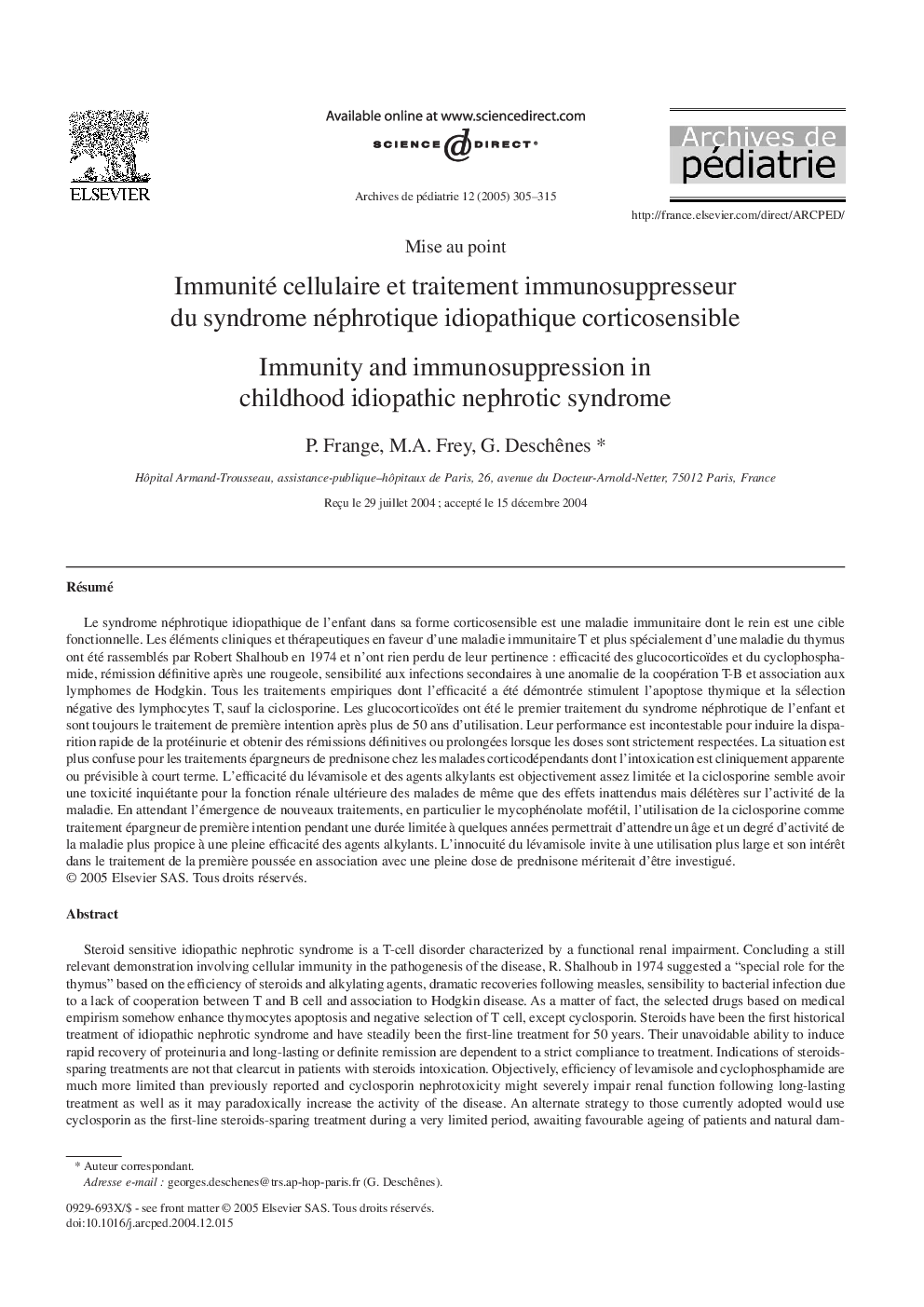| Article ID | Journal | Published Year | Pages | File Type |
|---|---|---|---|---|
| 9370263 | Archives de Pédiatrie | 2005 | 11 Pages |
Abstract
Steroid sensitive idiopathic nephrotic syndrome is a T-cell disorder characterized by a functional renal impairment. Concluding a still relevant demonstration involving cellular immunity in the pathogenesis of the disease, R. Shalhoub in 1974 suggested a “special role for the thymus” based on the efficiency of steroids and alkylating agents, dramatic recoveries following measles, sensibility to bacterial infection due to a lack of cooperation between T and B cell and association to Hodgkin disease. As a matter of fact, the selected drugs based on medical empirism somehow enhance thymocytes apoptosis and negative selection of T cell, except cyclosporin. Steroids have been the first historical treatment of idiopathic nephrotic syndrome and have steadily been the first-line treatment for 50 years. Their unavoidable ability to induce rapid recovery of proteinuria and long-lasting or definite remission are dependent to a strict compliance to treatment. Indications of steroids-sparing treatments are not that clearcut in patients with steroids intoxication. Objectively, efficiency of levamisole and cyclophosphamide are much more limited than previously reported and cyclosporin nephrotoxicity might severely impair renal function following long-lasting treatment as well as it may paradoxically increase the activity of the disease. An alternate strategy to those currently adopted would use cyclosporin as the first-line steroids-sparing treatment during a very limited period, awaiting favourable ageing of patients and natural dampening activity of the disease to a full efficiency of alkylating agents. Compared to cyclophosphamide and cyclosporin, the relative safety of levamisole is encouraging to a more frequent uses. Its association to a full dose of prednisone in the treatment of the inaugural episode should be investigated. According to the limitations of those therapies, emerging drugs as mycophenolate might be worthwhile in the treatment of nephrotic patients.
Keywords
Related Topics
Health Sciences
Medicine and Dentistry
Perinatology, Pediatrics and Child Health
Authors
P. Frange, M.A. Frey, G. Deschênes,
